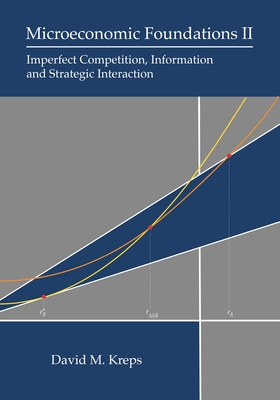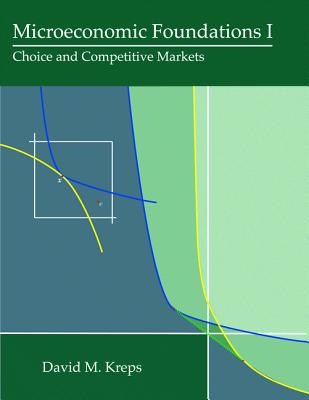图书简介
Photocatalysts in Advanced Oxidation Processes for Wastewater Treatment comprehensively covers a range of topics aiming to promote the implementation of photocatalysis at large scale through provision of facile and green methods for catalysts synthesis and elucidation of pollutants degradation mechanisms. This book is divided into two main parts namely "Synthesis of effective photocatalysts" (Part I) and "Mechanisms of the photocatalytic degradation of various pollutants" (Part II). The first part focuses on the exploration of various strategies to synthesize sustainable and effective photocatalysts. The second part of the book provides an insights into the photocatalytic degradation mechanisms and pathways under ultraviolet and visible light irradiation, as well as the challenges faced by this technology and its future prospects.
Preface xi Part 1: Synthesis of Effective Photocatalysts 1 1 Biogenic Synthesis of Metal Oxide Nanoparticle Semiconductors for Wastewater Treatment 3 Nkgaestsi M. Ngoepe, Mpitloane J. Hato, Kwena D. Modibane and Nomso C. Hintsho-Mbita 1.1 Introduction 4 1.2 Classifications of Semiconductor Nanostructured Materials 6 1.2.1 Zinc Oxide (ZnO) Nanostructures 6 1.2.2 Titanium Dioxide Nanostructures 7 1.3 Biological Synthesis of ZnO and TiO2 Nanostructures 9 1.3.1 Synthesis of ZnO and TiO2 Using Bacteria 10 1.3.2 Preparation of ZnO and TiO2 from Plants 13 1.4 Photocatalytic Degradation of Dyes 17 1.5 Challenges of Photocatalysis 22 1.6 Conclusions: Future and Scope 23 Acknowledgments 24 References 24 2 Wastewater Treatment: Synthesis of Effective Photocatalysts Through Novel Approaches 33 Tahira Qureshi, Monireh Bakhshpour, Kemal Cetin, Aykut Arif Topcu and Adil Denizli List of Abbreviations 34 2.1 Introduction 35 2.1.1 Miscellaneous Methods in Wastewater Treatment 36 2.1.2 Homogeneous Photo-Fenton for Wastewater Treatment 38 2.1.3 Heterogeneous Photocatalysis Processes for Wastewater Treatment 42 2.2 Synthesis of Photocatalytic Materials 44 2.2.1 Sol-Gel Synthesis 44 2.2.2 Hydrothermal Synthesis Process 46 2.2.3 Solvothermal Synthesis Process 47 2.2.4 Direct Oxidation Synthesis 48 2.2.5 Sonochemical Synthesis Method 48 2.2.6 Chemical Vapor Deposition Synthesis Method 49 2.2.7 Physical Vapor Deposition 50 2.2.8 Microwave Synthesis Process 51 2.2.9 Electrochemical Deposition Synthesis Process 52 2.3 Support Materials for Photocatalysis 53 2.3.1 Zeolites 53 2.3.2 Clays 54 2.3.3 Carbon Nanotubes (CNTs) 54 2.3.4 Additional Supports 55 2.4 Life Cycle Assessment of Photocatalytic Water Treatment Processes 56 2.5 Summary 57 References 58 3 Metal-Organic Frameworks as Possible Candidates for Photocatalytic Degradation of Dyes in Wastewater 65 Thabiso C. Maponya, Mpitloane J. Hato, Kwena D. Modibane and Katlego Makgopa 3.1 Introduction 66 3.2 Wastewater Treatment Methods 67 3.3 Photocatalysis 69 3.3.1 Background 69 3.3.2 Photocatalysts for Wastewater Treatment 69 3.4 Metal-Organic Frameworks 71 3.4.1 History and Discovery of MOFs 72 3.4.2 Structure of Metal-Organic Frameworks 72 3.4.3 Preparation of Metal-Organic Frameworks 75 3.4.3.1 Hydro/Solvothermal Synthesis 75 3.4.3.2 Microwave-Assisted Synthesis 76 3.4.3.3 Mechanochemical Process 77 3.4.3.4 Post Synthesis 78 3.4.5 Applications 79 3.4.6 MOFs for Photocatalytic Degradation 79 3.5 Conclusions 83 Acknowledgments 83 References 84 Part 2: Mechanisms of the Photocatalytic Degradation of Various Pollutants 93 4 Photocatalytic Degradation of Toxic Pesticides: Mechanistic Insights 95 Akeem Adeyemi Oladipo, Mustafa Gazi, Ayodeji Olugbenga Ifebajo, Adewale Sulaiman Oladipo and Edith Odinaka Ahaka 4.1 Introduction 96 4.1.1 Global Production, Consumption, and Distribution of Pesticides 97 4.1.2 Pesticide Remediation Technologies 98 4.2 Advanced Oxidation Processes 99 4.2.1 Heterogeneous Advanced Oxidation Processes 101 4.2.2 Homogeneous Advanced Oxidation Processes 102 4.3 Photobased Treatment Approaches for Pesticides 103 4.3.1 Photolytic Degradation of Pesticides 104 4.3.2 Photolytic Degradation of Pesticides Combined With Oxidants 106 4.4 Photocatalytic Degradation of Pesticides 106 4.4.1 Metal Oxide Semiconductors for Photocatalytic Degradation of Pesticides 114 4.4.2 Photocatalytic Degradation of Pesticides by Metal-Organic Frameworks 124 4.5 Mechanistic Insights Into Photocatalytic Degradation of Pesticides 128 4.6 Conclusions and Future Directions 131 References 132 5 Sustainable Photo- and Bio-Catalysts for Wastewater Treatment 139 Nour Sh. El-Gendy and Hussein N. Nassar 5.1 Introduction 139 5.2 Natural Apatite and Its Applications 141 5.3 Natural Apatite as a Photo-Bio-Catalyst for Wastewater Treatment 141 5.3.1 Photodegradation by Pure Apatite 142 5.3.2 Photodegradation by Titania/Apatite Nanocomposite 143 5.3.3 Photodegradation by Zinicate/Apatite Nanocomposite 147 5.3.4 Photodegradation by Other Metal/Apatite Nanocomposite 152 5.4 Photodegradation of Pharmaceutical Pollutants 157 5.5 Challenges and Opportunities 159 References 160 6 Recent Advancement in Visible-Light-Responsive Photocatalysts in Heterogeneous Photocatalytic Water Treatment Technology 167 Sadanand Pandey, Kotesh Kumar Mandari, Joonwoo Kim, Misook Kang and Elvis Fosso-Kankeu 6.1 Introduction 168 6.1.1 Technologies for Dye Removal From Contaminated Water 170 6.1.2 Photocatalysis 171 6.1.3 General Mechanism of Photocatalysis 172 6.1.4 Parameters Affecting the Photocatalytic Degradation of Dyes 177 6.1.4.1 Influence of pH on Photocatalytic Degradation of Dyes in Wastewaters 177 6.1.4.2 Crystal Composition and Catalyst Type 181 6.1.4.3 Pollutant Type and Concentration 183 6.1.4.4 Influence of Catalyst Loading 184 6.2 Conclusion and Future Research 186 Funding 187 Acknowledgments 187 References 187 7 Degradation Mechanism of Organic Dyes by Effective Transition Metal Oxide 197 Barkha Rani, G Thamizharasan, Arpan Kumar Nayak and Niroj Kumar Sahu 7.1 Introduction 198 7.2 Types of Dyes and Their Sources 198 7.3 Environmental Hazards 199 7.4 Conventional Dye Degradation Process 200 7.4.1 Coagulation/Flocculation Process 201 7.4.2 Membrane Separation Process 201 7.4.3 Ion Exchange Process 202 7.4.4 Adsorption on Activated Carbon 202 7.4.5 Advance Oxidation Process 202 7.5 Mechanism of Photocatalytic Dye Degradation 202 7.5.1 Adsorption Process 203 7.5.1.1 Langmuir Isotherm 203 7.5.1.2 Freundlich Isotherm 204 7.5.1.3 Temkin Isotherm 204 7.5.1.4 Dubinin Radushkevich Isotherm 205 7.5.2 Photocatalytic Dye Degradation 206 7.6 Nanomaterial Aspect for Dye Degradation Process 207 7.7 Transition Metal Oxide-Based Nanomaterials for Dye Degradation 208 7.7.1 Co-Precipitation Process 210 7.7.2 Hydrothermal/Solvothermal Technique 211 7.7.3 Thermal Decomposition Process 211 7.8 Challenges and Future Scope 219 7.9 Conclusions 220 References 221 8 Factors Influencing the Photocatalytic Activity of Photocatalysts in Wastewater Treatment 229 Rashi Gusain, Neeraj Kumar and Suprakas Sinha Ray 8.1 Introduction 230 8.2 Photocatalysis in Water Treatment 232 8.3 General Mechanism of Photocatalysis 233 8.4 Parameters Influencing Photocatalysis 235 8.4.1 Amount of Catalyst 235 8.4.2 Amount of Pollutant 235 8.4.3 Effect of pH 236 8.4.4 Effect of Oxidants 237 8.4.4.1 Effect of H2O2 239 8.4.4.2 Effect of KBrO3 240 8.4.4.3 Effect of (NH4)2S2O8 and K2S2O8 240 8.4.5 Effect of Temperature 241 8.4.6 Effect of Reaction Light Intensity 244 8.4.7 Effect of Doping 245 8.4.7.1 Noble Metal Doping 247 8.4.7.2 Metal Doping 248 8.4.7.3 Rare Earth Metal Doping 250 8.4.7.4 Non-Metallic Doping 251 8.4.7.5 Co-Doping 253 8.4.7.6 Self-Doping 253 8.4.8 Effect of Inorganic Ions 254 8.4.9 Effect of Size, Morphology, and Surface Area 255 8.5 Summary 257 Acknowledgment 258 References 258 9 Removal of Free Cyanide by a Green Photocatalyst ZnO Nanoparticle Synthesized via Eucalyptus globulus Leaves 271 L.C. Razanamahandry, J. Sackey, C.M. Furqan, S.K.O. Ntwampe, E. Fosso-Kankeu, E. Manikandan and M. Maaza List of Abbreviations 272 9.1 Introduction 272 9.2 Materials and Methods 274 9.2.1 Eucalyptus globulus Leaves Extract Preparation 274 9.2.2 Zinc Oxide Nanoparticle Synthesis 274 9.2.3 Zinc Oxide Characterizations 274 9.2.4 Free Cyanide Removal 275 9.3 Results and Discussion 276 9.3.1 Zinc Oxide Nanoparticle Characteristics 276 9.3.2 Free Cyanide Adsorption 281 9.4 Conclusion 284 References 285 Index 289
Trade Policy 买家须知
- 关于产品:
- ● 正版保障:本网站隶属于中国国际图书贸易集团公司,确保所有图书都是100%正版。
- ● 环保纸张:进口图书大多使用的都是环保轻型张,颜色偏黄,重量比较轻。
- ● 毛边版:即书翻页的地方,故意做成了参差不齐的样子,一般为精装版,更具收藏价值。
关于退换货:- 由于预订产品的特殊性,采购订单正式发订后,买方不得无故取消全部或部分产品的订购。
- 由于进口图书的特殊性,发生以下情况的,请直接拒收货物,由快递返回:
- ● 外包装破损/发错货/少发货/图书外观破损/图书配件不全(例如:光盘等)
并请在工作日通过电话400-008-1110联系我们。
- 签收后,如发生以下情况,请在签收后的5个工作日内联系客服办理退换货:
- ● 缺页/错页/错印/脱线
关于发货时间:- 一般情况下:
- ●【现货】 下单后48小时内由北京(库房)发出快递。
- ●【预订】【预售】下单后国外发货,到货时间预计5-8周左右,店铺默认中通快递,如需顺丰快递邮费到付。
- ● 需要开具发票的客户,发货时间可能在上述基础上再延后1-2个工作日(紧急发票需求,请联系010-68433105/3213);
- ● 如遇其他特殊原因,对发货时间有影响的,我们会第一时间在网站公告,敬请留意。
关于到货时间:- 由于进口图书入境入库后,都是委托第三方快递发货,所以我们只能保证在规定时间内发出,但无法为您保证确切的到货时间。
- ● 主要城市一般2-4天
- ● 偏远地区一般4-7天
关于接听咨询电话的时间:- 010-68433105/3213正常接听咨询电话的时间为:周一至周五上午8:30~下午5:00,周六、日及法定节假日休息,将无法接听来电,敬请谅解。
- 其它时间您也可以通过邮件联系我们:customer@readgo.cn,工作日会优先处理。
关于快递:- ● 已付款订单:主要由中通、宅急送负责派送,订单进度查询请拨打010-68433105/3213。
本书暂无推荐
本书暂无推荐















